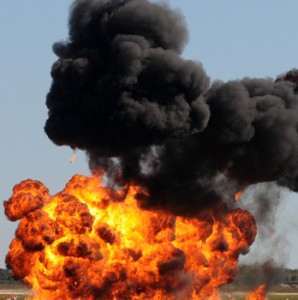The National Transportation Safety Board (NTSB) is urging tougher standards for oil tankers carrying Bakken crude.
Related: Bakken Crude by Rail Under Attack
In a 10 page letter to the Pipeline and Hazardous Materials Safety Administration (PHMSA), the NTSB outlined its findings from their study of recent train derailment accidents and concluded that the current fleet of DOT-111 tank cars rupture too quickly and result in spillage and ignition. The agency also found that performance of the industry’s enhanced CPC-1232 rail car is unsatisfactory.
Controversy over the safety of moving crude by rail has skyrocketed as several high-profile accidents have recently made headlines. This combined with a sharp increase in crude by rail since the start of the oil boom has many concerned.
Related: Crude by Rail Up 1700%
“We can’t wait a decade for safer rail cars,” said NTSB Chairman Christopher A. Hart. “Crude oil rail traffic is increasing exponentially. That is why this issue is on our Most Wanted List of Safety Improvements. The industry needs to make this issue a priority and expedite the safety enhancements, otherwise, we continue to put our communities at risk.”
Based on their study, the NTSB gave the following recommendations that would require:
- All new and existing tank cars used to transport all Class 3 flammable liquids be equipped with thermal protection systems that meet or exceed the thermal performance standards
- All new and existing tank cars used to transport all Class 3 flammable liquids be equipped with appropriately sized pressure relief devices that allow the release of pressure under fire conditions and that minimizes the likelihood of energetic thermal ruptures
- An aggressive, intermediate progress milestone schedule, such as a 20 percent yearly completion metric over a 5-year implementation period, for the replacement or retrofitting of legacy DOT-111 and CPC-1232 tank cars to appropriate tank car performance standards
- Establishment of a publicly available reporting mechanism that reports at least annually
Read more at ntsb.gov

